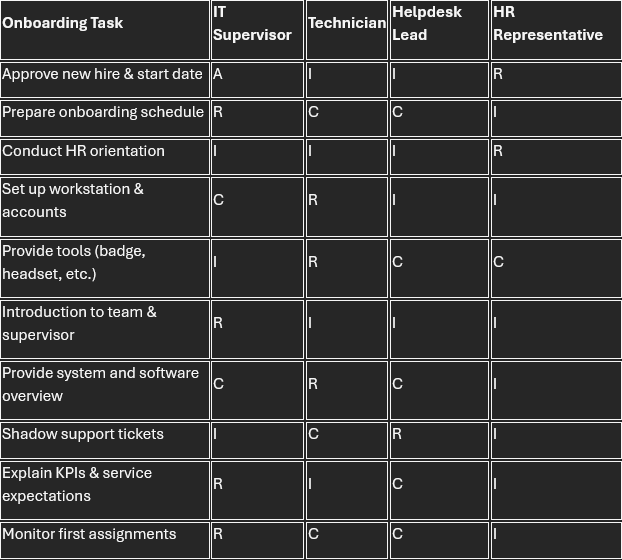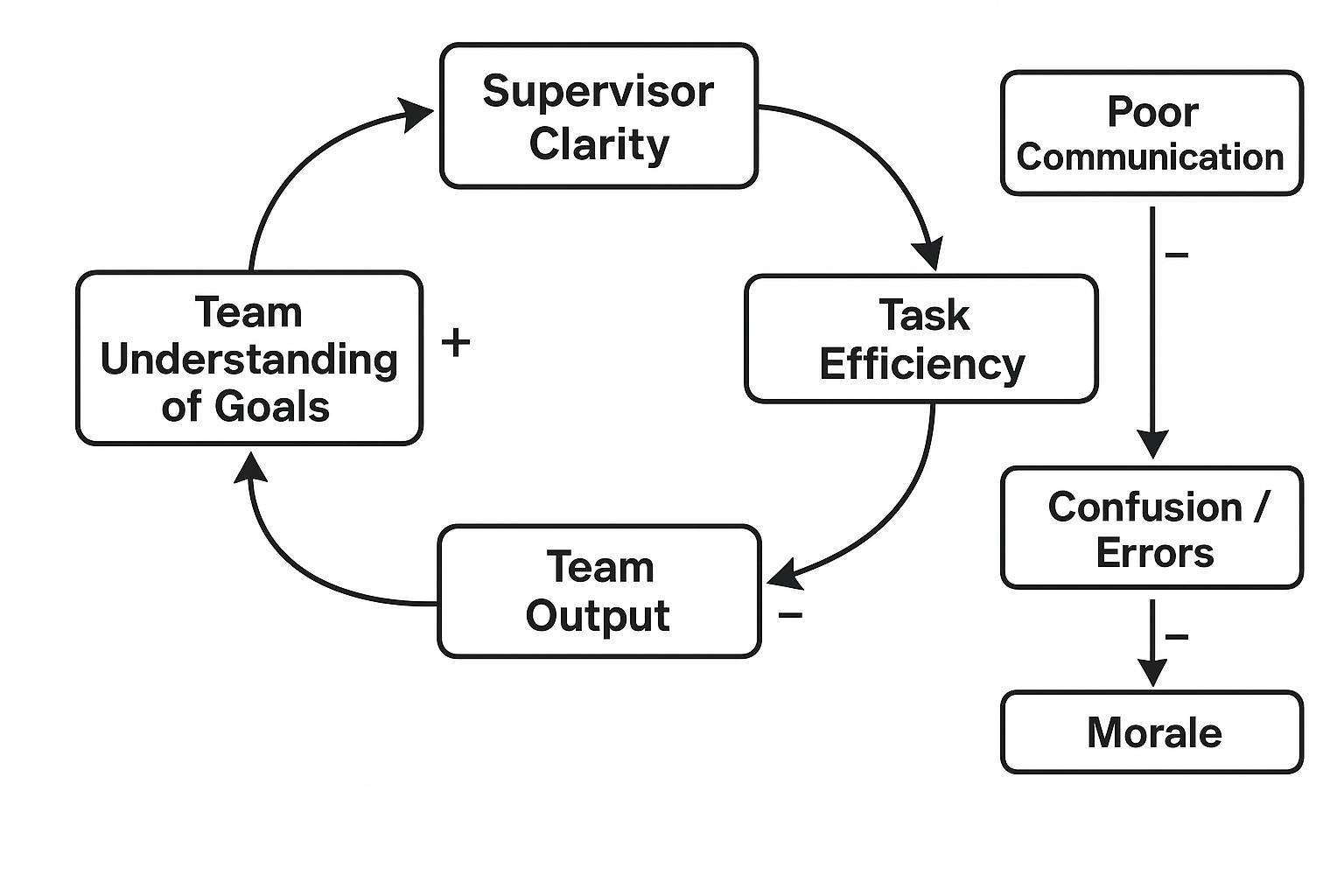MSITM - ISR Web Portfolio
Working in the IT field as a Consultant for NTT Data at Vanderbilt and for Texas Tech University’ Desktop/On-site Services department has taught me that being an IT professional is about providing excellent customer service, not just about utilizing your technical knowledge.
An IT professional are providing a user experience to their customers/end users. Customers should be treated with patience and empathy. Someone with the technical skills and knowledge should not only resolve the issue, but make someone’s day. End user experience should result in resolution and happiness, I know that I wouldn’t want to be left helpless.
Complaints, should they arise, should be met with professionalism and understanding. Use the Socratic questioning method, “What do you mean by…” Complaints are often the result of problems that have yet to be solved (Ciotti, 2016.) Find the root of the issue and make someone’s day!
Customer Service Standards
Helpdesk Ticket Response - Sample
Good afternoon,
Thank you for the information regarding your account being locked, ____. I apologize for any inconvenience this may have caused and I am here to help!
Below is a link to reset the password to your user account, please click the link and follow the instructions on screen to reset your password. Then, try again.
Password Reset Hyperlink: __________
If the problem persists, or if you need help troubleshooting the issue, please do not hesitate to reach out!
Thank you,
Trevor Boortz
IT Helpdesk Support - Tier 1
Escalation Matrix
Incident Report Template
KPI and Budgeting Tools
KPI Dashboard
Description: A streamlined KPI dashboard indicating the response time of our IT team Helpdesk, security incidents within the company, and the variance in our IT budget. Each KPI has it’s own unit, followed by the weeks of the month in which the performance indicator was measured, including a status. Green being good, yellow being lackluster, and red meaning this was not a good month for us.
Mini IT Office Budget Plan
(Microsoft Excel, 2025.)
Monthly Supervisor Summary Report:
Director,
Overall team performance this month was more on the hectic side, constantly working to catch up and resolve an influx of security incidents. We also saw an uptick in helpdesk response time, as the new monitors we ordered for staff were set up and therefore some of our staff were on-site, as indicated in week 1. We recommend outsourcing helpdesk staff or increasing our staff size in the future to make up for the increase in response time. Improvements can be made here with our scheduling as well.
This month, we also saw an uptick in helpdesk response time with the influx of security incidents for the organization we currently are under contract for. There was a phishing scam that sent out a link through email that was clicked by several employees, causing the uptick. This required our immediate attention and was quickly resolved, however, the security incidents left rebounding effects throughout the month. We recommend educating the staff of the organization we service on phishing links, as currently, the organization is lagging on security training. The purpose of this security incident performance indicator is that it is a key indicator which can measure our effectiveness and the organization’s lagging measures or places we both can improve upon (Enochson, 2024.)
Budget this month was underspent, landing under budget by $4,757. Recommend using this extra budget to bring on new employees. This will help with our helpdesk response time and allow us to respond to security incidents faster and more efficiently. New monitors were ordered to help with the eye fatigue that some employees were complaining about. This should allow for more time at the desk and lead to more efficient employees. Out of the ordinary, we ordered two new handheld zebra printers for the new IT staff. This should help with the asset management process of tagging the new monitors and equipment we get, allowing for better tracking and response.
Overall, the team responded well under pressure this month. Solutions to the problems indicated by our KPI dashboard include employee education, hiring more IT staff, and hiring or outsourcing helpdesk staff.
Team Leadership & HR Tools
3-Day Onboarding Plan
RACI Chart - Onboarding Process
PTO Request and Approval Tracker
HR Warning Memo Template
Date: [Insert Date]
To: [Employee Full Name]
From: [Supervisor Full Name & Title]
Subject: Formal Warning – [Policy or Conduct Violation]
Violation Description:
[Clearly describe the incident or behavior that violates policy. Be specific, objective, and concise.]
Supervisor’s Statement:
[Explain the impact on team performance, service quality, or work environment. State why this is being addressed.]
Improvement Expectations:
[List expectations for future behavior]
[Describe required changes or performance goals]
[Provide a timeline for improvement and follow-up review date]
Acknowledgment:
I have received and reviewed this warning memo. My signature acknowledges that I understand this memo.
Employee Signature:
Date:
Supervisor Signature:
Date:
Ethics, Systems & Culture
Casual Loop Diagram: Supervisor Communication and Team Output
Ethical Dilemma Response:
Let’s say the head of my department asked me to slightly modify our data in our key performance indicators. Since I would be the one responsible with generating the metrics related to helpdesk ticket response times, I could be asked to modify the data to make it less accurate and reflect better upon our department. What if we had a bunch of tickets that took too long to resolve or did not get resolved in the past week, and my boss wanted to change the metrics to look as if they were complete on time or even early?
Obviously, the correct answer would be to decline and submit the accurate data as it was recorded without any modifications. Misrepresenting the team’s performance could cause a domino effect, leading to decision making based on that data. Misleading information can lead to multiple data fallacies like false causality or base rate fallacy, leading to unrealistic standards, bias, and even loss of trust in our department (Radusinovic, 2022.)
Outside of the obvious reasons, there are legal, ethical and moral dilemmas that come with lying about data. Upholding integrity and putting your morals above all else can save you legal trouble in the long run. The last thing I would want to do is get my department in legal trouble that I can face consequences over. Doing the right thing can also mean protecting yourself and your company. On top of that, leaders should lead by example. Showing that you lie to reflect better performance from yourself puts you at a disadvantage. Managing expectations is something you have to account for as a manager, whether that is with your boss or your customers.
As a supervisor and leader, I commit myself to many ethical and moral values.
1. Non-discrimination and Respect
I firmly believe that everyone deserves a fair and equal chance, especially when it comes to the workplace. Everyone should be treated equally and with respect. How you treat others is a reflection on how you yourself wish to be treated.
2. Transparency
Communication is key when managing any team. A failure to communicate can break down progress fast. Maintaining open communication and clarity about decisions builds trust.
3. Data Privacy
As a current employee in the hospital system, I am a firm believer of data privacy for my customers. Data privacy should be the standard when it comes to being professional. Sensitive data must remain confidential at all times to maintain trust with your client base.
4. Fairness and Growth
I believe that everyone deserves a chance to move up based on their performance alone, not favoritism. Being able to put your feelings aside and stay professional is key when leading a team. Valuing skill over favoritism.
Cultural Adaptation Reflection: U.S. to Japan
As someone raised in the U.S. workplace, I expect the Japanese IT workplace environment to differ significantly in terms of hierarchy, communication style, and expectations around leadership. While American work culture often encourages directness, autonomy, and rapid iteration, Japanese workplaces tend to prioritize harmony, consensus, and respect for seniority.
Key Differences
Communication: In Japan, communication tends to be indirect and context-driven. Silence may be used strategically, and saying “no” outright is often avoided to maintain harmony. I will need to pay close attention to nonverbal cues and implied meanings.
Feedback Style: Whereas American workplaces value frequent and candid feedback, in Japan, feedback is typically delivered more subtly and often in private. Criticism may be softened to preserve group cohesion.
Leadership Expectations: Japanese teams often expect leaders to guide by example, demonstrate humility, and seek team consensus before making decisions. Assertive, top-down leadership may be viewed as disruptive or disrespectful.
My Adaptation Strategy:
To succeed in Japan’s IT leadership environment, I believe active listening and cultural humility will be key. I’ll adapt by observing how senior staff interact, adjusting my tone and pace in meetings, and avoiding overly direct confrontation. I will continue to learn business Japanese phrases and business etiquette to show respect and build trust. I believe that trying to adapt and learn the culture will make me stand out. While maintaining my core leadership principles, I aim to align my approach with the local values of group harmony, patience, and professionalism.






